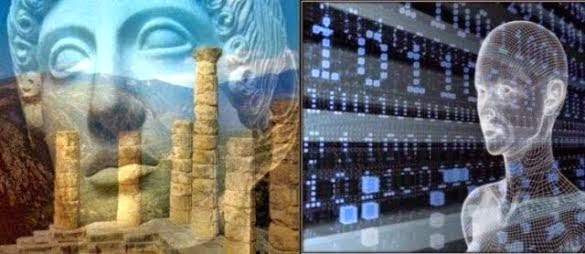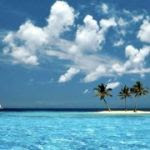Image Source – BBC News
When the word ‘disaster’ strikes our ears, we immediately know that something bad has happened. But in some cases like the Japanese tsunami, the word disaster doesn’t quiet cut it. Across the currently shattered land are anxious footsteps of dedicated rescue teams, troops, medical staff and public members uniting from Britain, China and New Zealand – all desperately trying to evacuate people to emergency shelters and striving to put an end to the ever increasing death toll.
So how bad are things?
Paragraphs can be spent writing about the devastating affects from the earthquake and flowing tsunami that gulped everything within its past. Numbers can explain the quantities of working troops, homeless bodies and deaths. Metaphors can be used to explain the crumbled buildings and lost family members. But nothing can explain things as clear as photographs.
Triggered by the 8.9 magnitude quake in Japan, Friday, March 11, 2011, a 33-tf high Tsunami crashes through Japan – taking everything within its path.
And the aftershocks go on: 275 new tremors hit quake-torn Japan, leaving many homes burnt, crumbled and inhabitable.

Image Source – BBC News
A woman is pulled free from the rubble by the passionate hands of man, in the ruined city of Natori.

Image Source – Daily Mail
Rising from a tilted petroleum refining plant, flames and smoke stain the sky.

Image Source – Daily Mail
Greif, loneliness, fear? These are just guesses to what women in Japan are feeling after losing everything.

Image Source – BBC News
Shocking scenes from near Sendai , a graveyard for burnt engines caused by the fires triggered by the tsunami. The cost to Japan’s economy runs in the tens of billions – alongside with a crashing stock market.

Image Source – BBC News
Watch as members of the British search and rescue team work in Kamaish – 13,000 and ever increasing is the number of confirmed dead and missing.

Image Source – BBC News
This is just one (Sendai) of the many river banks shattered beyond recognition following the tsunami.

Image Source – Daily Mail
450,000 people have been staying in temporary shelters at sub-zero night-time temperatures, most seeing very little food and water since the disaster took over on Friday.

Image Source – BBC News
Destroyed in a classroom in Higashimatsushima, a muddy stuffed bear is just one of the tantalizing reminders of life before the tsunami.

Image Source – BBC News
What caused the earthquake?
The massive 9.0 magnitude quake (the fourth-largest recorded since 1900) was caused when the pacific tectonic plate dove under the North American plate resulting in the shift of Eastern Japan towards North America. With its immense power the quake caused the earth’s axis to shift, shortening the day by 1.6 microseconds. Causing Japan’s eastern coastline to sink downwards by two feet, the tsunami waves rolled in reeking havoc.
How to Help.

Image Source – BBC News
When the word ‘disaster’ strikes our ears, we immediately know that something bad has happened. But in some cases like the Japanese tsunami, the word disaster doesn’t quiet cut it. Across the currently shattered land are anxious footsteps of dedicated rescue teams, troops, medical staff and public members uniting from Britain, China and New Zealand – all desperately trying to evacuate people to emergency shelters and striving to put an end to the ever increasing death toll.
So how bad are things?
Paragraphs can be spent writing about the devastating affects from the earthquake and flowing tsunami that gulped everything within its past. Numbers can explain the quantities of working troops, homeless bodies and deaths. Metaphors can be used to explain the crumbled buildings and lost family members. But nothing can explain things as clear as photographs.
Triggered by the 8.9 magnitude quake in Japan, Friday, March 11, 2011, a 33-tf high Tsunami crashes through Japan – taking everything within its path.
And the aftershocks go on: 275 new tremors hit quake-torn Japan, leaving many homes burnt, crumbled and inhabitable.
Image Source – BBC News
A woman is pulled free from the rubble by the passionate hands of man, in the ruined city of Natori.
Image Source – Daily Mail
Rising from a tilted petroleum refining plant, flames and smoke stain the sky.
Image Source – Daily Mail
Greif, loneliness, fear? These are just guesses to what women in Japan are feeling after losing everything.
Image Source – BBC News
Shocking scenes from near Sendai , a graveyard for burnt engines caused by the fires triggered by the tsunami. The cost to Japan’s economy runs in the tens of billions – alongside with a crashing stock market.
Image Source – BBC News
Watch as members of the British search and rescue team work in Kamaish – 13,000 and ever increasing is the number of confirmed dead and missing.
Image Source – BBC News
This is just one (Sendai) of the many river banks shattered beyond recognition following the tsunami.
Image Source – Daily Mail
450,000 people have been staying in temporary shelters at sub-zero night-time temperatures, most seeing very little food and water since the disaster took over on Friday.
Image Source – BBC News
Destroyed in a classroom in Higashimatsushima, a muddy stuffed bear is just one of the tantalizing reminders of life before the tsunami.
Image Source – BBC News
Japan’s earthquake shifted balance of the planet
The impact of the distressing earthquake and tsunami was so imposing it has caused the planet’s axis to shift, and has forced Japan closer to the United States. The quake caused a crack 15 miles below the sea floor that stretches for 186 miles long and 93 miles wide. Geophysicist Ross Stein has claimed that the areas closest to the epicentre of the quake have jumped a complete 13 feet closer to the United States.What caused the earthquake?
The massive 9.0 magnitude quake (the fourth-largest recorded since 1900) was caused when the pacific tectonic plate dove under the North American plate resulting in the shift of Eastern Japan towards North America. With its immense power the quake caused the earth’s axis to shift, shortening the day by 1.6 microseconds. Causing Japan’s eastern coastline to sink downwards by two feet, the tsunami waves rolled in reeking havoc.
How to Help.
Image Source – BBC News



















Post A Comment:
0 comments: